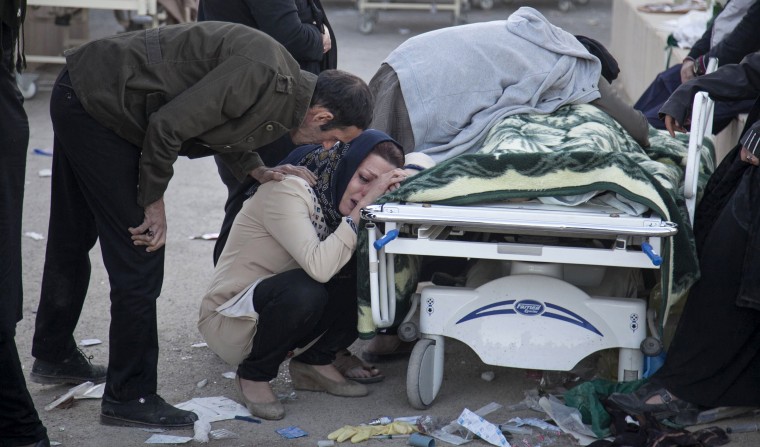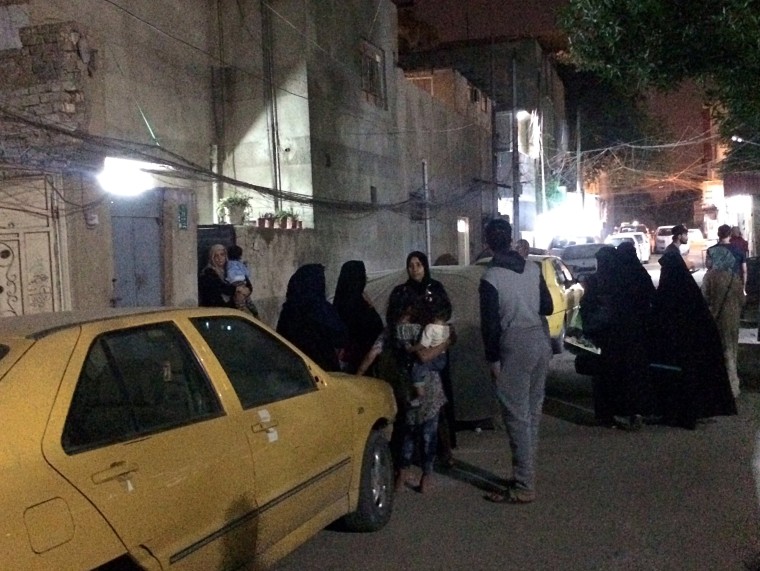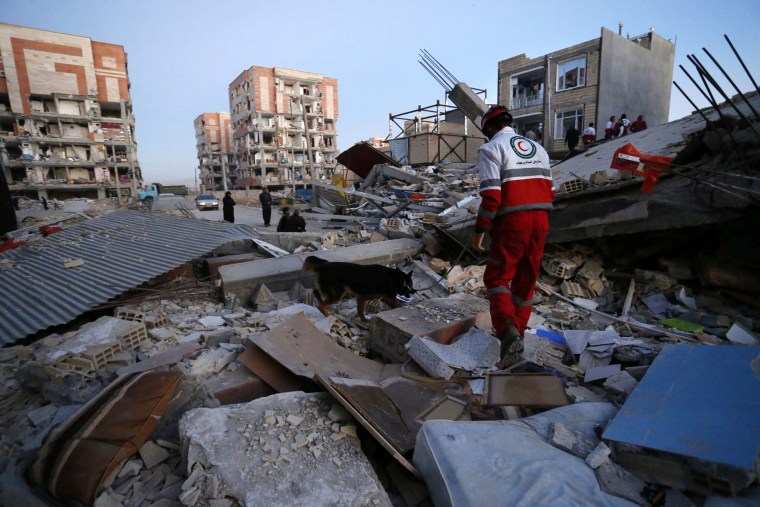At least 437 people were killed and more than 7,600 others injured after a 7.3-magnitude earthquake struck near Iran's border with Iraq, authorities said Monday.
In Iran, rescuers who worked through dozens of aftershocks and were hindered by landslides ended their efforts late Monday night/early Tuesday morning, the country's top emergency management official, Pir-Hossein Kolivand said, according to Reuters.
Many houses in rural areas of Iran are made of mud bricks that can crumble easily in a quake.
The official Islamic Republic News Agency in Iran said the quake killed 430 people and injured at least 7,100. And Iraq's Interior Ministry confirmed that seven people in the neighboring country were killed by the quake, with 535 people wounded.
Other reports put the death toll in Iran at more than 450.
The U.S. Geological Survey said the quake was recorded at 9:18 p.m. local time (1:18 p.m. ET) Sunday. It measured the quake at a magnitude 7.3.
It was felt as far west as the Mediterranean coast. The quake's worst damage appeared to be in the town of Sarpol-e-Zahab in Kermanshah province, which sits in the Zagros Mountains that divide Iran and Iraq.
"I was sitting with my kids having dinner and suddenly the building was just dancing in the air."
Kokab Fard, a 49-year-old housewife in Sarpol-e-Zahab, told The Associated Press she could only flee empty-handed when her apartment complex collapsed.
"Immediately after I managed to get out, the building collapsed," Fard said. "I have no access to my belongings."
The head of Iranian Red Crescent said more than 70,000 people were in need of emergency shelter.
Stephen Hicks, a seismologist at the University of Southampton in England, said that in a region where earthquakes are common, Sunday's quake appeared to be the largest in "a long time."

Iran sits on many major fault lines and is prone to quakes. In 2003, a magnitude 6.6 earthquake flattened the historic city of Bam, killing 26,000 people.
The quake was felt as far south as Baghdad, where many residents rushed from their houses and tall buildings when tremors shook the Iraqi capital.
"I was sitting with my kids having dinner and suddenly the building was just dancing in the air," said Majida Ameer, who told Reuters she ran out of her building in the city's Salihiya district with her three children. "I thought at first that it was a huge bomb. But then I heard everyone around me screaming: 'Earthquake!'"

At her home in the Iraqi city of Irbil, about 170 miles northwest of the epicenter, Lana Serwan said the temblor lasted for a minute.
"Everything was shaking," said Serwan, 35.
Another Irbil resident, Manar Ksebeh, 26, said he was in his 12th-floor apartment when he heard people running and shouting. So he fled down his building's stairwell.
"I wanted to make sure I wasn't feeling dizzy," Ksebeh said.
Video posted to social media showed people who evacuated high-rise buildings in Kuwait lining the streets and a swinging chandelier in an apartment in Israel.
In a statement, Israeli Intelligence Minister Israel Katz said, "My condolences to the people of Iran and Iraq over the loss of human life caused by the earthquake." Iran does not recognize Israel.
The quake also damaged the dam holding back the Diyala River near Darbandikhan, Iraq.
There is now "very clear damage to the top” of the 1961-built facility with both "horizontal and vertical cracks on the road and in the body of the dam,” its director, Rahman Hani, told The Associated Press.
It wasn't immediately clear how the damage would impact power production.

